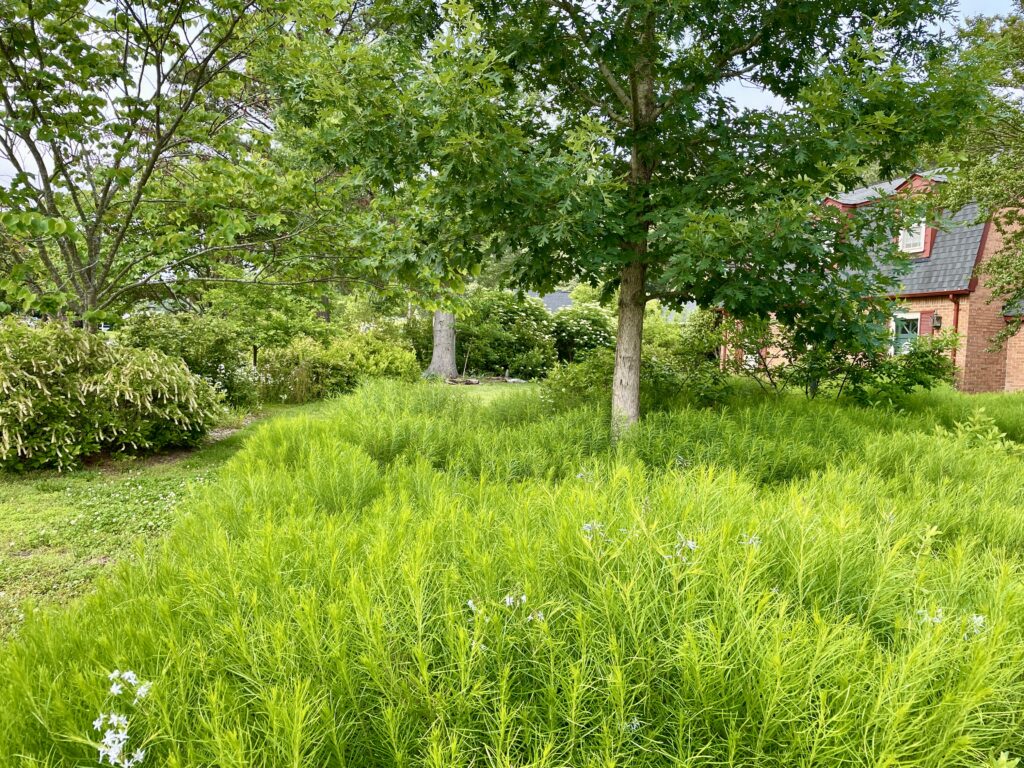
By Mary Reid Barrow
When Trista and Chris Imrich purchased their Alanton home in 2014, the front yard was all grass, except for a few trees and shrubs. The back yard was all grass too, other than typical trees and shrubs around the yard perimeter.
Today, their mainstream suburban yard is no more. Over the years, much of the grass has been removed to make way for beds of native flowers, shrubs, and trees that provide food and cover for wildlife and beauty and veggies for the humans.
Trista, a native plant landscaper and owner of Wild Works of Whimsy, a Pearl Business, is opening her yard as part of LRNow’s Native Garden Tour from 9 to 11: 30 a.m. on Friday, June 16. A small space garden and a shoreline garden also are on the tour, and you can find out more here.
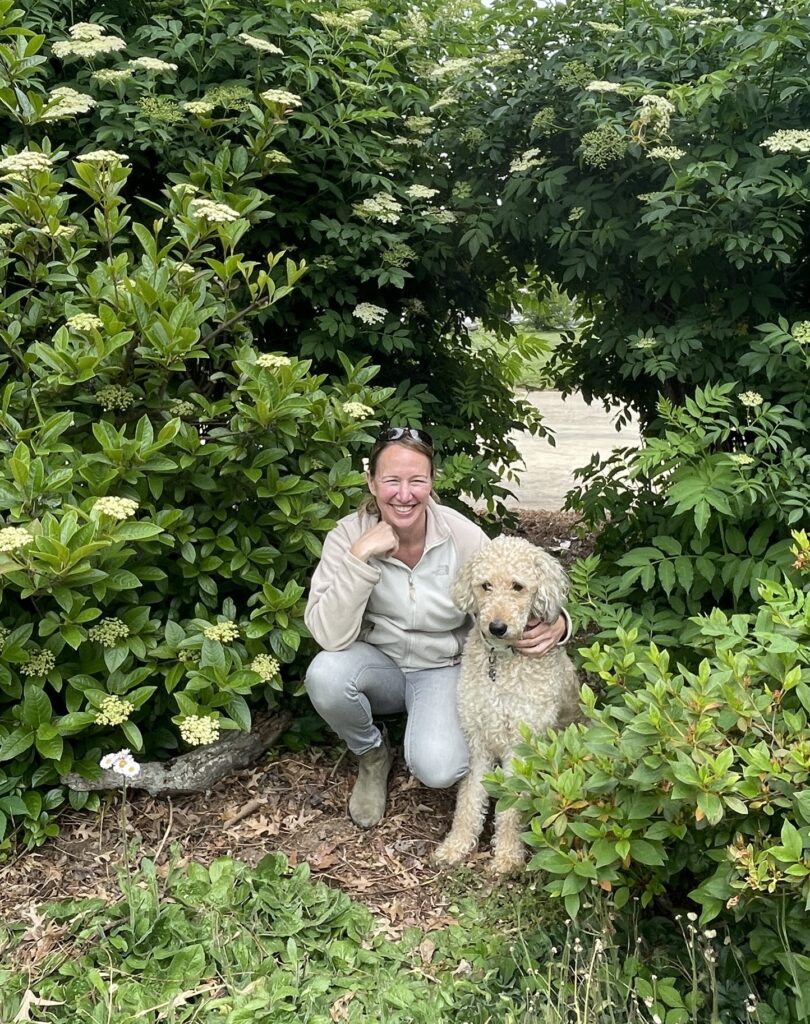
When visitors walk up to Trista’s yard, they will see a huge bed of blue star amsonia, finishing up its bloom, its tall green stems wafting in the breeze. On a recent day, a little cabbage butterfly fluttered over the plants searching for the last flowers. Beyond, flowers of sweetspire, elderberry, native viburnums, and more lit up the yard.
And then there’s the Habitat Tree, a dying red oak that the Imrichs saved from the axe. They asked an arborist to cut the tree back so dead branches would not be a danger and gave the old tree new life as a home for birds and insects.
Woodpeckers, nuthatches, and bluebirds have raised their young in nest holes in the tree. Insects attracted to the dying tree provide food for birds and their young ones and serve as pollinators.
“It just keeps going, “Trista said. “It’s still leafing out so much.”
In the backyard, you will first notice a large area in the middle that features raised beds of fruits, vegetables, and herbs with groups of flowers nearby to lure in the pollinators.
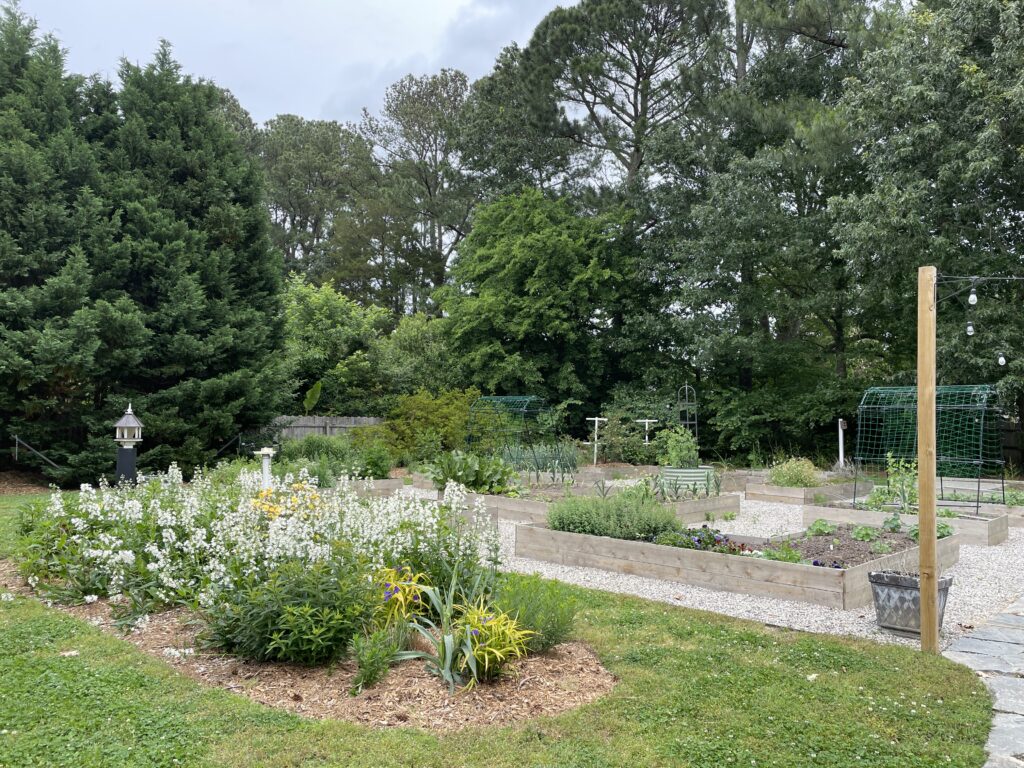
Original shrub and tree beds around the perimeter have been greatly enlarged to include more native trees and flowers A new garden pond is gurgling away on one side. Play equipment for son, Cody, and running room for dog, Henry, are all part of this garden.
When Trista chooses a plant for the garden, she considers many things, such as its ability to provide beauty, color, year round interest, as well as food or habitat for pollinators and other wildlife.
“While I am not a ‘purist,’ my philosophy is to get as many native plants in the ground as possible,” Trista said. “That often means using dwarf cultivars of plants for space and form consideration but maintaining wildlife function by keeping color and flower shape.”
Take her front yard. Though blue star amsonia, a favorite of Trista’s, is not a local native, it is native to narrow range of the southeast, and it’s not invasive, she said. Butterflies were nectaring on its blooms on a recent day.
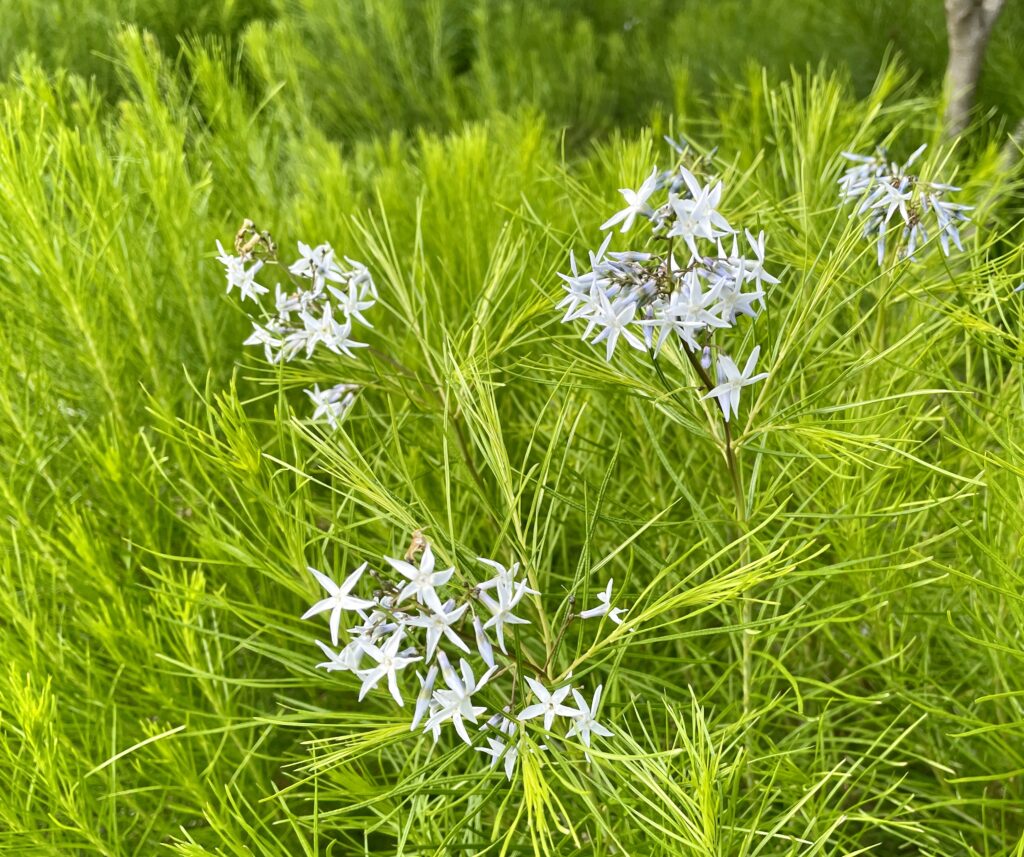
“Once it blooms, it stays green and lush into late summer,” she said. “It goes into fall colors from bright green to yellow and orange. And it’s so pretty against the purple of asters in the fall.”
Around back, a typical suburban yard of all grass is no more. The Imrichs grow vegetables, such as onions, elephant garlic and eggplant, along with perennial herbs and fruits, such as blackberries, blueberries, and raspberries.
Natives, such as penstemon and milkweed, as well as annuals like zinnias are nearby to lure in the pollinators for the veggies. Not too long ago, a couple of monarch butterflies stopped for nectar on a blooming butterfly weed. Columbine makes itself known throughout the gardens wherever it choses to land and grow.
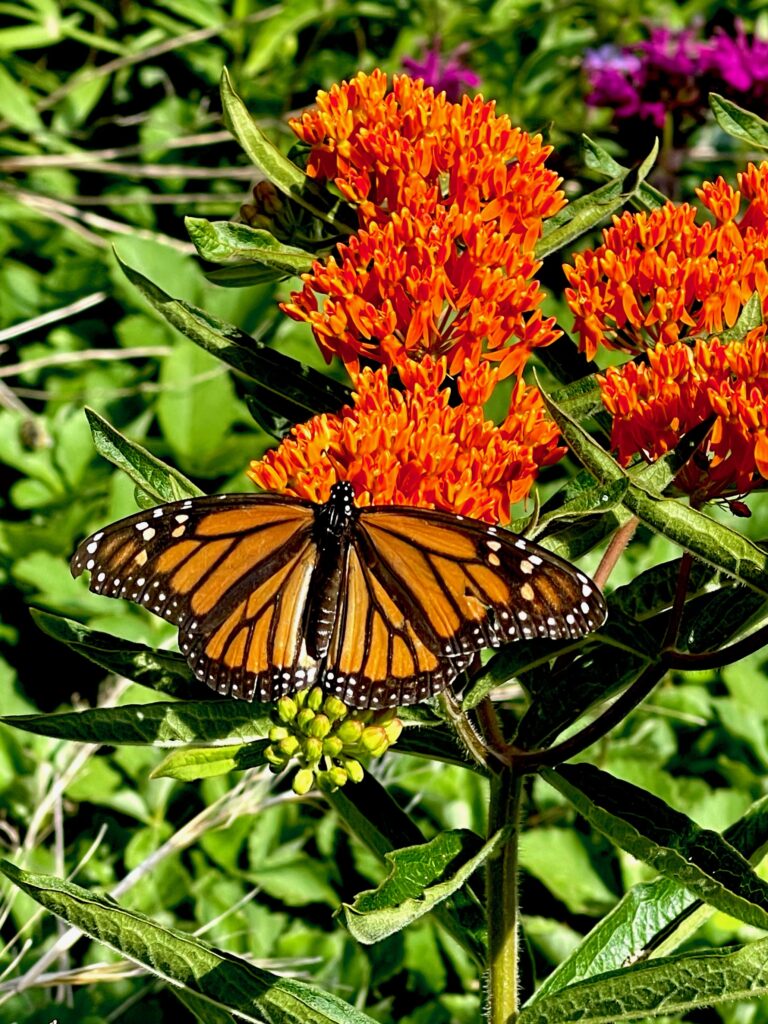
Photo by Trista Imrich
A huge coral honeysuckle tumbles from the garden gate arbor to lure in hummingbirds while a Dutchman’s pipevine is waiting for the pipevine swallowtail butterfly to lay its eggs on the heart-shaped leaves.
Little by little, the Imrich’s have enlarged the beds containing the original tree and shrubs along the property line. You will find additions such as buckeye and red bud trees, mountain laurel and inkberry, along with woodland phlox and May apple tucked in.
Nearby, half of a broken clay pot by the patio door has become a shelter for a female box turtle that may or may not have laid her eggs there!
Whether a clay pot as box turtle shelter or an aging tree in a new life as a wildlife shelter, whether a vine for hummingbirds, or butterfly weed for pollinators, whether beauty for the eyes or veggies for table, Trista has managed to combine it all.